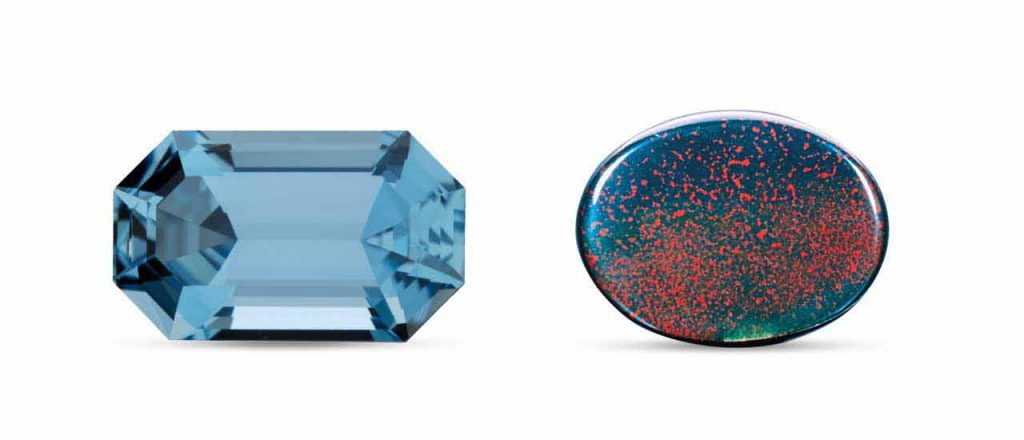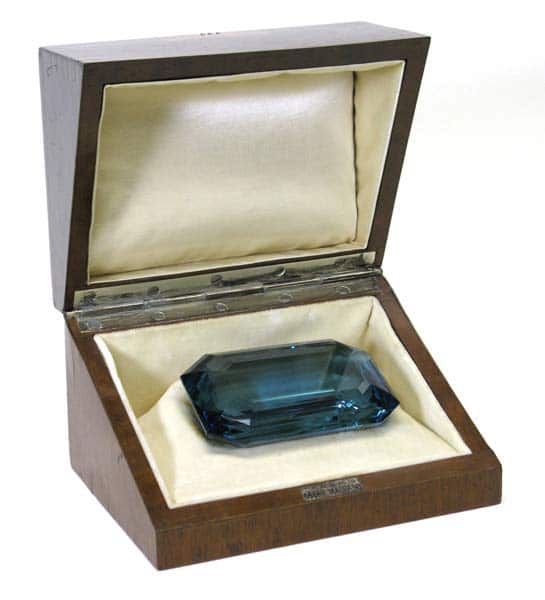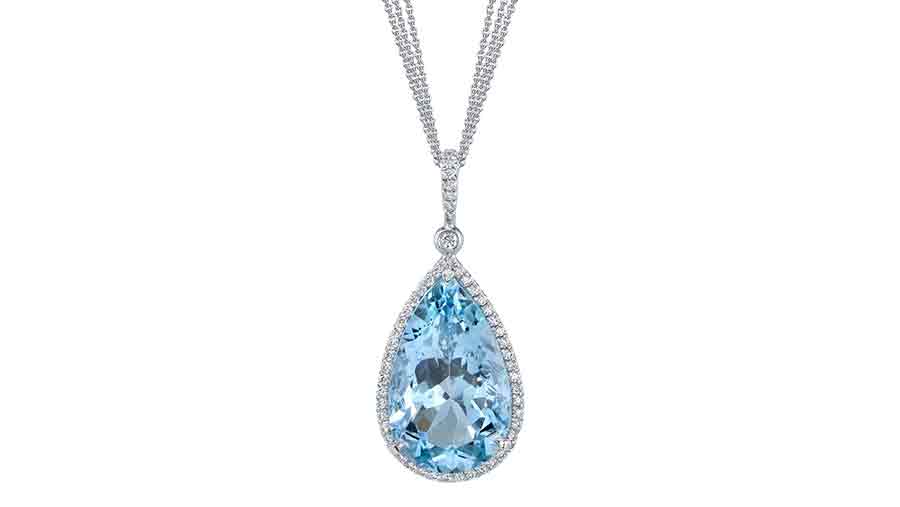MARCH BIRTHSTONE

In March, there are two birthstones, namely Aquamarine and Bloodstone. Yes, March Birthstone has two special stones linked to it. Although Aquamarine takes the lead in representing the month, there’s also an alternative birthstone called Bloodstone. Aquamarines come in colors ranging from dark blue to slightly greenish-blue. While most aquamarines have a light greenish-blue shade, their value goes up as the color becomes darker blue. Enthusiasts and collectors worldwide highly desire this ocean-blue beauty. So, in March, you get to choose between these two unique and beautiful birthstones, each with its distinct charm and significance.
Bloodstone is more of a dark green color with hints and tiny splashes of brown or red, which give the stone its unique name. The color of a bloodstone ranges from dark green known as forest green to dark bluish-green.
AQUAMARINE BIRTHSTONE - FOR THOSE BORN IN MARCH
MARCH BIRTHSTONE (AQUAMARINE) MEANING & HISTORY
Aquamarine earned the title “sailors’ stone” because Romans and Greeks carried it on voyages for protection at sea. When facing tough times, they’d toss these stones into the sea to calm angry Gods. In the Middle Ages, aquamarine played another role as a “magic mirror,” used to predict fortunes and futures.
The history of bloodstones traces back to the Babylonians before 539 BC, with some claiming they formed when Christ’s blood stained Jasper. Recognized as the “martyr’s stone,” bloodstone appeared in many crucifixion images during medieval times. So, these gemstones hold not only beauty but also fascinating tales of ancient beliefs and practices.
CHEMICAL PROPERTIES
Beryl makes up Aquamarine, having a chemical name Beryllium Aluminum Silicate and a composition of Be3Al2(Si16O18). On the Mohs scale of hardness, it ranges from 7 to 8. Aquamarine might also contain hematite, mica, or saltwater.
On the other hand, Bloodstone is part of the cryptocrystalline quartz family, known as silicon dioxide. Identifying the crystals in this gemstone under a light microscope can be challenging. Generally, there are two types of bloodstone: plasma, dominating the green color, and heliotrope, which displays red. These two unique gemstones have distinct compositions and characteristics that make them stand out in the world of precious stones.
HEALING PROPERTIES
Aquamarines possess healing properties, serving as a natural stress reliever and instilling a sense of calmness and joy. Spiritually, these stones are recognized for enhancing psychic abilities and aiding in reaching a deeper state of meditation.
Bloodstone contributes to immune system benefits, strengthening it and offering clarity in decision-making while dispelling negativity and fostering a positive mindset. Whether it’s Aquamarine or Bloodstone, both gems associated with March offer a multitude of advantages for well-being. Consequently, embracing these stones can bring about a positive impact on both physical and mental aspects.

Aquamarine not only represents the birthstone for March but also serves as a gift for the 19th wedding anniversary. The government of Brazil presented First Lady Eleanor Roosevelt with a notable example, a dark blue rectangular step-cut aquamarine, in 1936. Weighing an impressive 1,298 carats, lapidaries fashioned this gem as the larger of two stones from a piece of aquamarine rough that itself weighed an astounding 2.9 pounds. Currently housed at the Franklin D. Roosevelt Presidential Library and Museum in Hyde Park, New York, it stands as a remarkable piece of history.
The Dom Pedro Aquamarine at the Smithsonian Institution, weighing around 10,363 carats or about 4.6 pounds, stands as another noteworthy attraction and is believed to be the largest faceted aquamarine globally. This approximately 14-inch high obelisk, created by the renowned German lapidary Berndt Munsteiner using the fantasy cut technique, adds to the allure of this mesmerizing gem.
WHERE IS AQUAMARINE FOUND?
Brazil leads in providing the largest amount of Aquamarines, with other contributors being Pakistan, Madagascar, Russia, Afghanistan, and Kenya. India is the primary source of Bloodstone deposits, although this unique gemstone is also found in Australia, Brazil, China, and the US. Transitioning from one gem to the other, these countries contribute significantly to the global availability of Aquamarines and Bloodstones.

Estimates suggest that small-scale artisanal miners, like this tsavorite miner near Voi in Kenya, supply some 80% of the world’s gems.
MARCH OR AQUAMARINE BIRTHSTONE CARE & CLEANING
Aquamarines and bloodstones require special care to prevent damage. Avoid exposing aquamarines to ammonia and alcohol, as these chemicals can easily harm them. It’s advisable to keep these gemstones away from such substances. To avoid damage, ensure that intense chemicals and harsh temperatures do not come into contact with bloodstones. To ensure protection, place the gemstones in a padded container or wrap them in a microfiber cloth to prevent scratches. I recommend cleaning these stones with sudsy water and taking your gems to a trustworthy jeweler twice every year for professional care. This routine care helps maintain the beauty and durability of these precious stones.

This 10.06 ct pear shaped aquamarine is surrounded by 72 round diamonds (0.35 carats) that are set in platinum.
